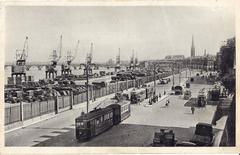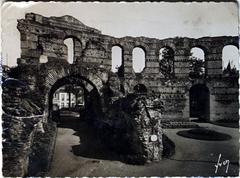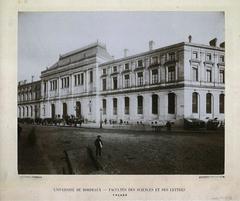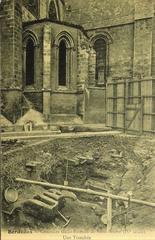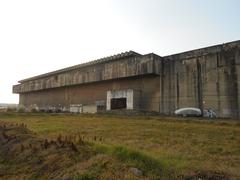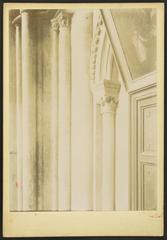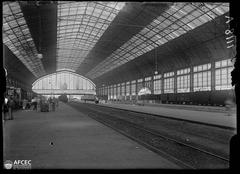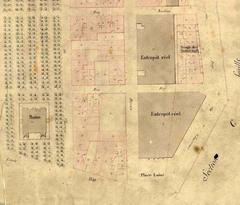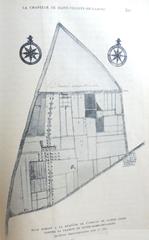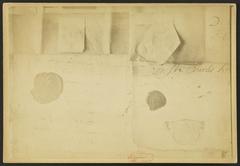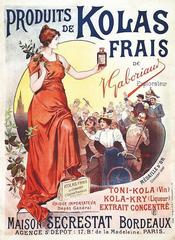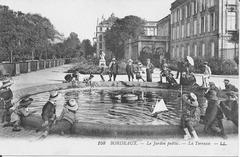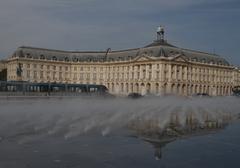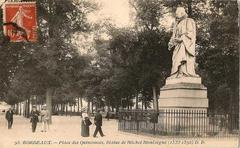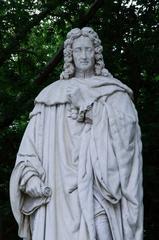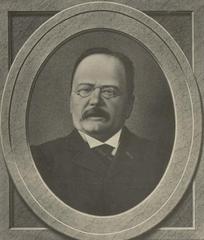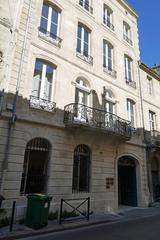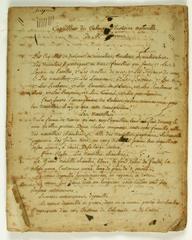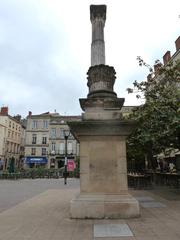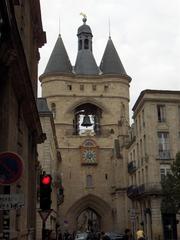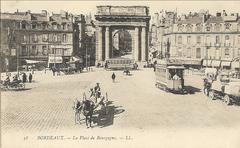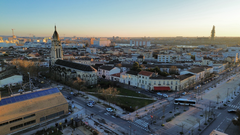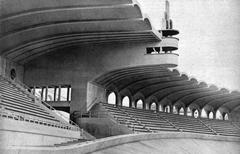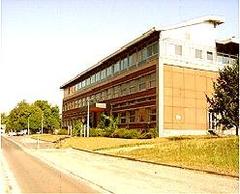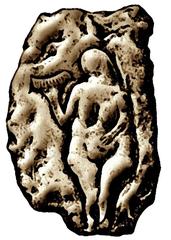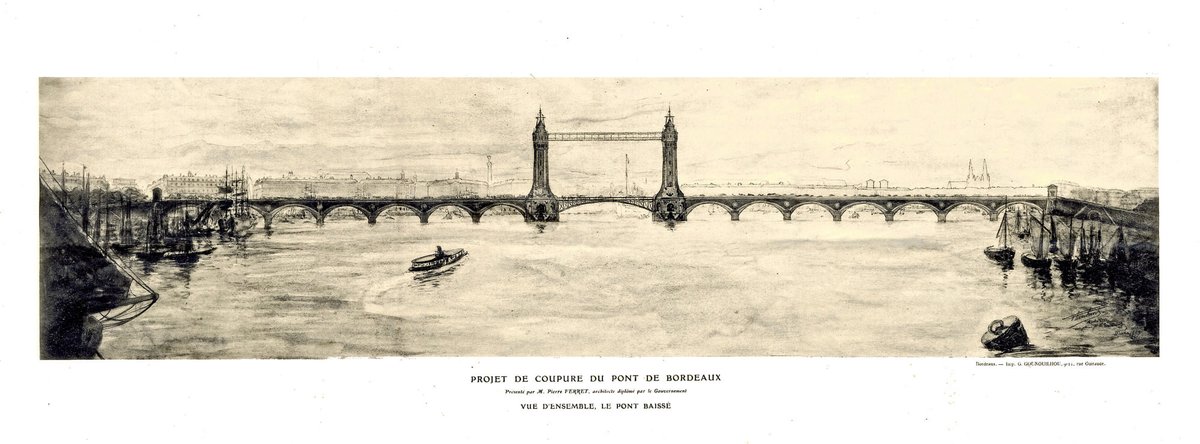
Pont de Pierre Bordeaux: Visiting Hours, Tickets, and Historical Site Guide
Date: 15/06/2025
Introduction
The Pont de Pierre, or “Stone Bridge,” is one of Bordeaux’s most iconic and enduring landmarks. Spanning the Garonne River since the early 19th century, this neoclassical masonry bridge is not only a marvel of engineering but also a symbol of Bordeaux’s historical resilience, urban unity, and architectural beauty. Commissioned by Napoleon Bonaparte, its construction overcame significant natural obstacles and played a pivotal role in the city’s commercial and cultural development. Today, the Pont de Pierre is celebrated for its historical significance, unique design, and its function as a pedestrian and cycling thoroughfare in the heart of Bordeaux (GPSmyCity; Bordeaux Tourism; Wikipedia.
Table of Contents
- Introduction
- Historical Overview
- Visiting the Pont de Pierre: Practical Information
- Architectural Features
- Engineering Innovations and Restoration
- Symbolism and Urban Integration
- Frequently Asked Questions (FAQ)
- Conclusion and Visitor Tips
- References
Historical Overview
Origins and Conception
The idea for the Pont de Pierre originated during the reign of Napoleon Bonaparte, who recognized the need for a permanent crossing over the Garonne River to aid military campaigns and foster Bordeaux’s economic growth. Before its construction, the river was a major barrier, navigable only by ferries, which hampered both trade and mobility (GPSmyCity).
Napoleon ordered the bridge in 1806, but construction did not begin until 1810 due to political changes and technical challenges. The original plans reflected both strategic imperatives and a vision of imperial grandeur (Wikipedia).
Construction and Engineering Feats
Building the Pont de Pierre was an extraordinary technical achievement. Engineers faced formidable challenges posed by the Garonne’s strong currents, variable tides, and unstable, muddy riverbed. Techniques such as the use of wooden piles and a diving bell (borrowed from the British) for underwater work were pioneering at the time. Construction began earnestly in 1819 and the bridge was completed in 1822, after a series of delays caused by natural disasters and political upheaval (Bordeaux City Tours; Wikipedia).
The finished structure measures 487 meters in length and 19 meters in width, comprising 17 elegant arches—purportedly matching the number of letters in “Napoléon Bonaparte.” Each arch was once intended to bear imperial symbols, but political transitions led to the use of white medallions and, later, Bourbon ciphers (TravelSetu).
Historical and Cultural Significance
The Pont de Pierre was Bordeaux’s first stone bridge and, for more than a century, the only permanent crossing over the Garonne within the city. Its completion unified the left and right banks, spurred the development of the La Bastide district, and facilitated Bordeaux’s emergence as a major port and wine trading hub (France-Voyage).
Key Events and Transformations
Over its two centuries of existence, the Pont de Pierre has witnessed and adapted to wars, urban growth, and technological change. In the 20th century, its width was expanded and, by 2018, motorized traffic was permanently banned to preserve its structure and enhance pedestrian and cyclist safety. Today, it serves as a key artery for public transport, walking, and cycling (Bordeaux Métropole).
Preservation and Heritage Status
The bridge has been a protected Monument Historique since 2002, ensuring that all preservation and restoration efforts safeguard its historic and architectural integrity (Ministère de la Culture).
Visiting the Pont de Pierre: Practical Information
Visiting Hours
- Open 24/7: The bridge is accessible at all times, day and night, making it the perfect spot for an early morning stroll or a romantic evening walk.
Tickets and Entry
- Free Access: No tickets are required. Pedestrians and cyclists can cross the bridge at no cost.
Accessibility
- Fully Accessible: The bridge is suitable for wheelchairs, strollers, and those with reduced mobility. The surface is flat and user-friendly.
Getting There
- Tram: Lines A and B stop nearby (e.g., Place de la Bourse, Porte de Bourgogne).
- Bus: Several city bus lines serve the area.
- On Foot/Bike: Easily reached from both banks and integrated with Bordeaux’s pedestrian and cycling paths.
Best Time to Visit & Photography Tips
- Golden Hours: Visit at sunrise or sunset for the best light and dramatic views of the city skyline and river.
- Night: The bridge is beautifully illuminated in the evening, highlighting its arches and medallions—ideal for photography.
Nearby Attractions
- Place de la Bourse and Miroir d’eau: Stunning architecture and reflections.
- Bordeaux Historic Center: UNESCO-listed streets, shops, and cafés.
- La Bastide District: Trendy right bank area with parks and riverfront restaurants.
Guided Tours
- Available: Many city walking and cycling tours include the Pont de Pierre. Check local tourism sites or offices for schedules and booking (Bordeaux Tourism).
Architectural Features
Structural Composition and Materials
Despite its name, “Pont de Pierre” refers to a masonry bridge and is constructed mainly from brick, with stone used for load-bearing elements and decorative features. The 17 semicircular arches rest on robust piers set deep in the riverbed, with hollow galleries inside for maintenance access—a notable innovation at the time (Bordeaux City Tours; Wikipedia).
Style and Decorative Elements
The bridge exemplifies neoclassical style, with symmetrical arches, elegant streetlamps (restored to their 19th-century appearance), and white medallions on each pier. Four lion statues stand at the city entrances, symbolizing protection and strength. The visual harmony of the bridge, especially when lit at night, has made it an enduring subject for artists and photographers (Nen Signature Voyage).
Engineering Innovations and Restoration
Original Engineering Challenges
Engineers Claude Deschamps and Jean-Baptiste Basilide Billaudel led the construction, innovating with wooden piles, underwater diving bells, and hollow maintenance galleries to overcome the river’s challenging conditions. The bridge’s foundations were a technical triumph given the Garonne’s powerful currents (Wikipedia).
Modern Adaptations
The bridge was widened in 1924 and, most notably, closed to private vehicles in 2018 to prevent structural fatigue. Today, embedded sensors and regular inspections monitor its health, reflecting Bordeaux’s ongoing commitment to preservation (Bordeaux City Tours).
Current Restoration Project (2025–2029)
A major restoration effort, budgeted at €50 million, is underway to address foundation settlement, water infiltration, and masonry degradation. Key interventions include reinforcing foundations with deep micropiles, installing advanced waterproofing, and carefully restoring stonework—all under the supervision of heritage authorities (Le Bonbon; Bordeaux Métropole).
During summer construction periods, tram traffic is suspended and rerouted, but pedestrian and cycling access is maintained wherever possible (Bordeaux Métropole).
Symbolism and Urban Integration
For nearly 150 years, the Pont de Pierre was the only bridge connecting Bordeaux’s left and right banks. It represents not only physical but also symbolic unity—linking the historic center with the developing La Bastide district. Its presence has shaped urban growth, inspired city events, and contributed to Bordeaux’s identity as a dynamic port city (Barnes Bordeaux; Lost in Bordeaux).
Frequently Asked Questions (FAQ)
Q: Are there entrance fees or tickets to visit the Pont de Pierre?
A: No. Visiting and crossing the bridge is free for all pedestrians and cyclists.
Q: What are the opening hours?
A: The bridge is accessible 24/7.
Q: Is the bridge accessible for wheelchair users?
A: Yes. The surface is flat and suitable for wheelchairs and strollers.
Q: Can I cycle or drive across the bridge?
A: Cycling is allowed. Private motor vehicles are prohibited; only trams, buses, taxis, emergency vehicles, cyclists, and pedestrians may use the bridge.
Q: Are guided tours available?
A: Yes. Many walking and cycling tours of Bordeaux include the Pont de Pierre.
Q: What are the best times to visit for photography?
A: Early morning, sunset, and nighttime (when the bridge is illuminated) offer the best photo opportunities.
Q: How do I get there using public transport?
A: Tram Lines A and B and several bus lines stop nearby, with easy access from both banks.
Visuals and Media Suggestions
-
High-Quality Images: Feature close-ups of the arches, medallions, and nighttime illumination.
Alt text suggestion: “Pont de Pierre Bordeaux at sunset over the Garonne River.” -
Interactive Map: Embed a map showing the bridge’s location and nearby attractions.
-
Virtual Tour: Link to or embed a virtual tour for remote exploration.
Conclusion and Visitor Tips
The Pont de Pierre is far more than a river crossing—it is a living emblem of Bordeaux’s rich historical tapestry, architectural excellence, and commitment to sustainable urban development. Its 17 arches memorialize the city’s imperial heritage while its ongoing restoration and adaptive reuse reflect modern values of preservation and accessibility. With free, 24-hour access for pedestrians and cyclists, easy public transport connections, and proximity to top attractions like Place de la Bourse and Bordeaux’s historic center, the bridge is a must-see whether you are a first-time visitor or a long-time resident.
Visitor Tips:
- Visit during sunrise or sunset for stunning views and fewer crowds.
- Combine your visit with a stroll through the historic center or La Bastide district.
- Stay informed about restoration work to avoid construction-related closures.
- Download the Audiala app and follow official tourism channels for real-time updates and curated travel guides.
References and Further Reading
- Visiting Pont de Pierre in Bordeaux: History, Tickets, Hours & Travel Tips, 2024, GPSmyCity (GPSmyCity)
- Pont de Pierre Bordeaux: Visiting Hours, Tickets, History, and Travel Tips, 2024, Bordeaux Tourism (Bordeaux Tourism)
- Pont de Pierre Bordeaux: Visiting Hours, Tickets, History, and Travel Tips, 2024, Bordeaux City Tours (Bordeaux City Tours)
- Pont de Pierre Bordeaux: Visiting Hours, Tickets & Historical Insights, 2024, Wikipedia (Wikipedia)
- Pont de Pierre Bordeaux: Visiting Hours, Tickets & Historical Insights, 2024, TravelSetu (TravelSetu)
- Pont de Pierre Bordeaux: Visiting Hours, Tickets, Restoration Updates, and Visitor Guide to This Historic Bridge, 2024, Bordeaux Métropole (Bordeaux Métropole)
- Pont de Pierre Bordeaux: Visiting Hours, Tickets, Restoration Updates, and Visitor Guide to This Historic Bridge, 2024, Le Bonbon (Le Bonbon)
- Pont de Pierre Bordeaux: Visiting Hours, Tickets & Historical Insights, 2024, Lost in Bordeaux (Lost in Bordeaux)
- Pont de Pierre Bordeaux: Visiting Hours, Tickets, History, and Travel Tips, 2024, Bordeaux Métropole (Bordeaux Métropole)


